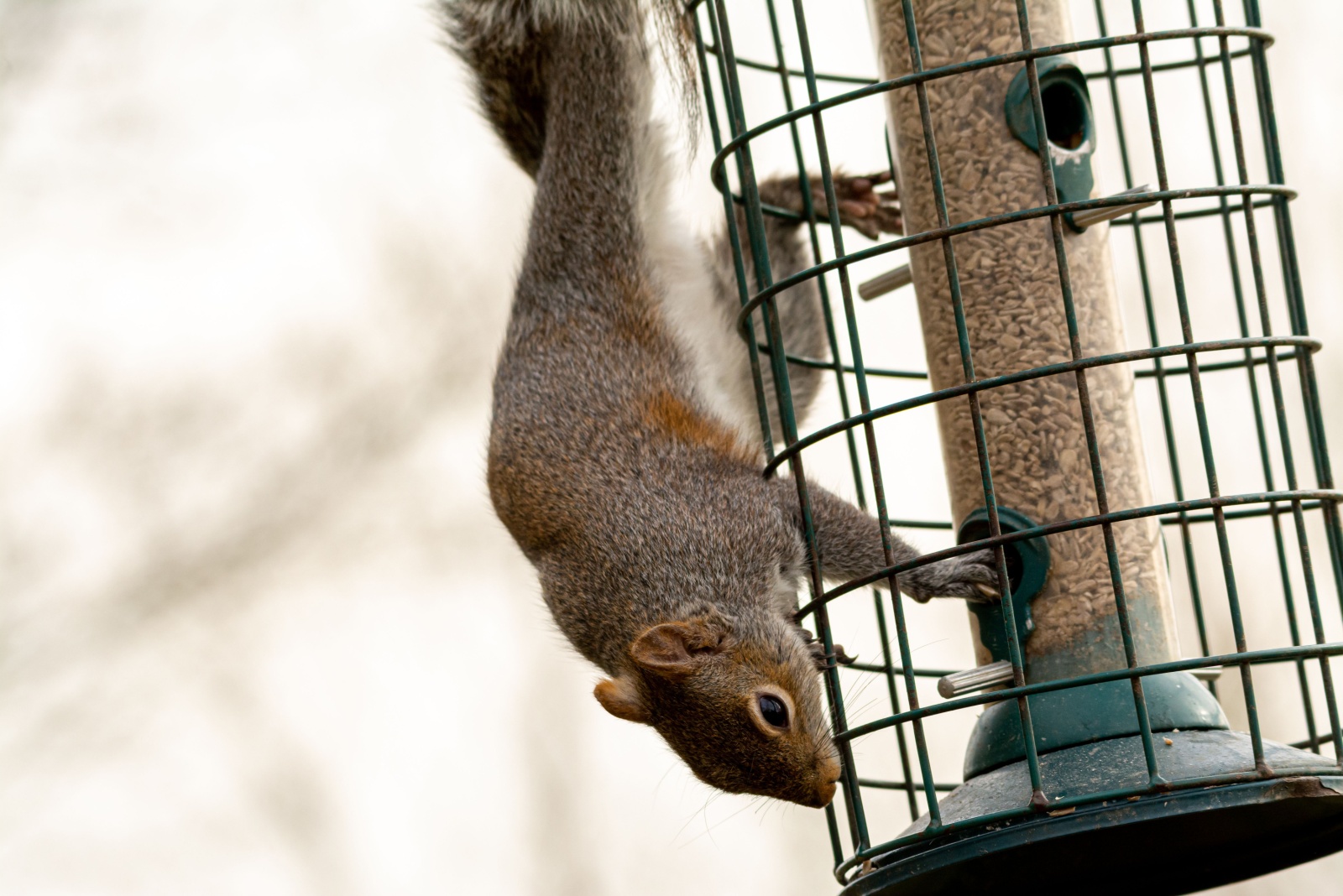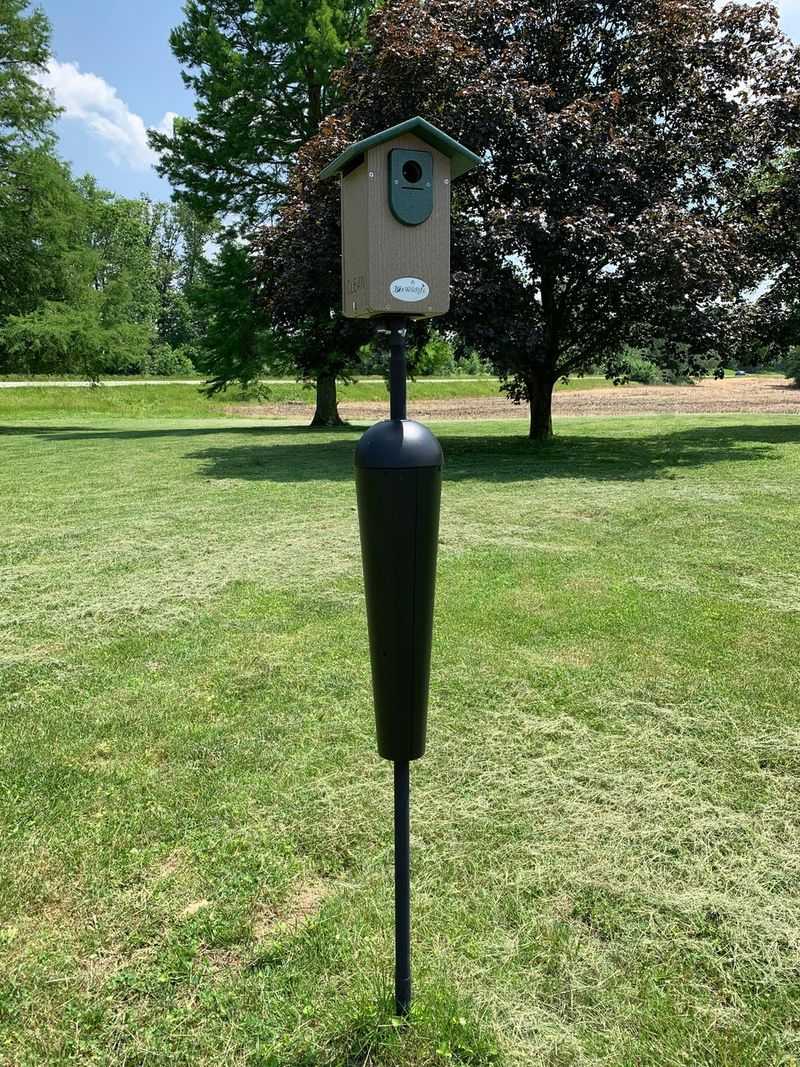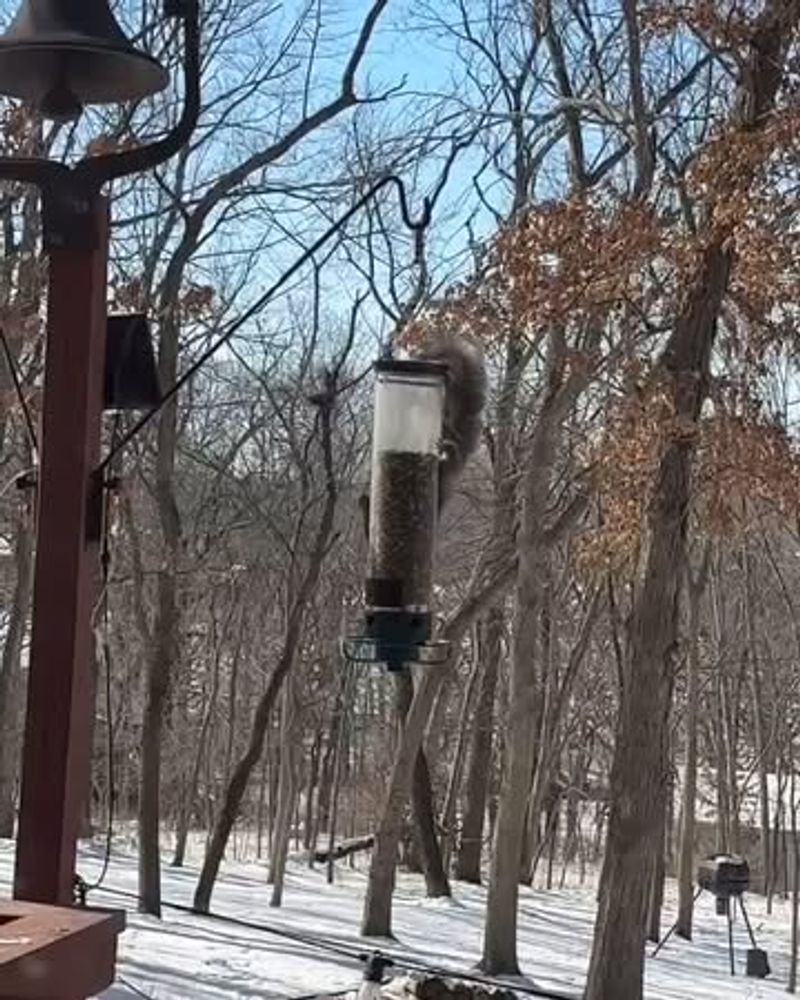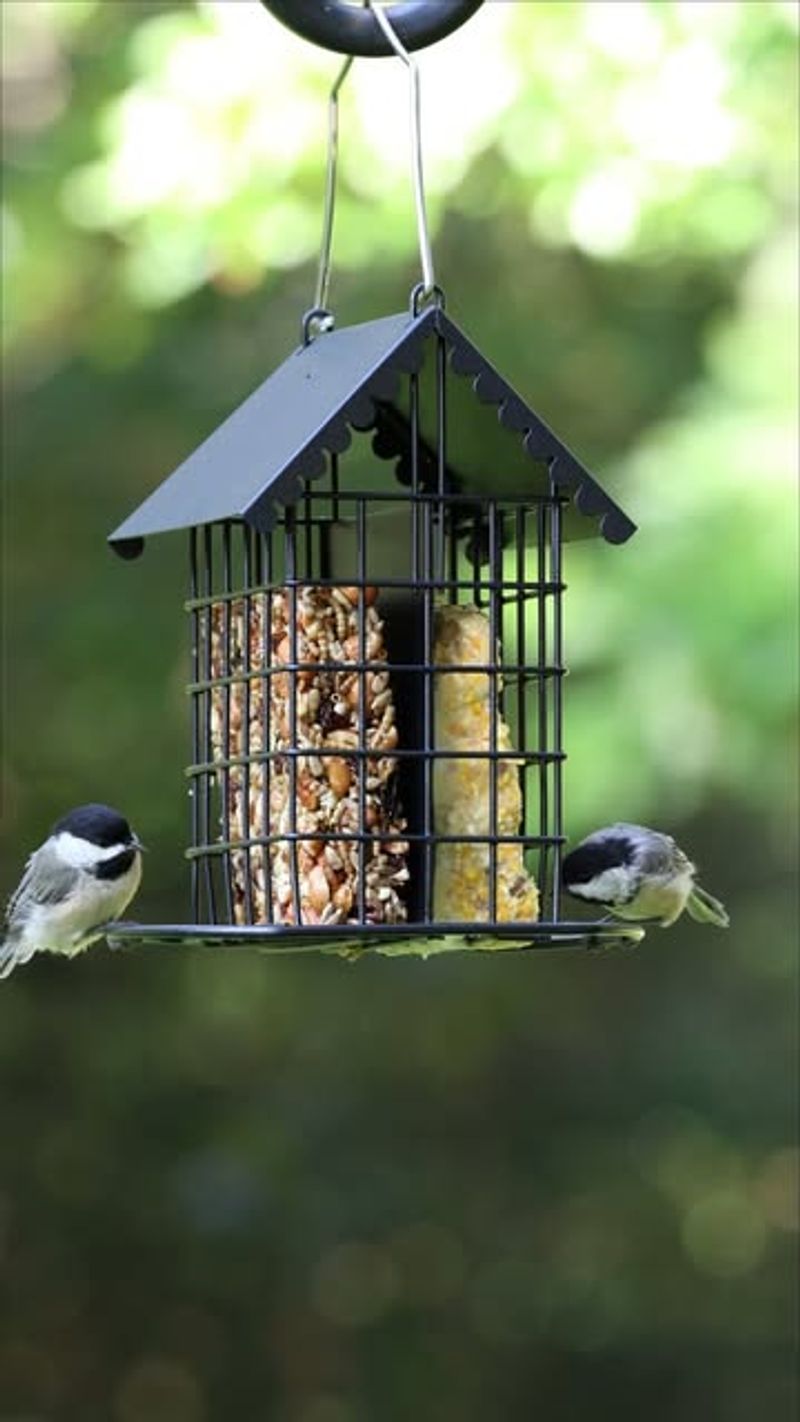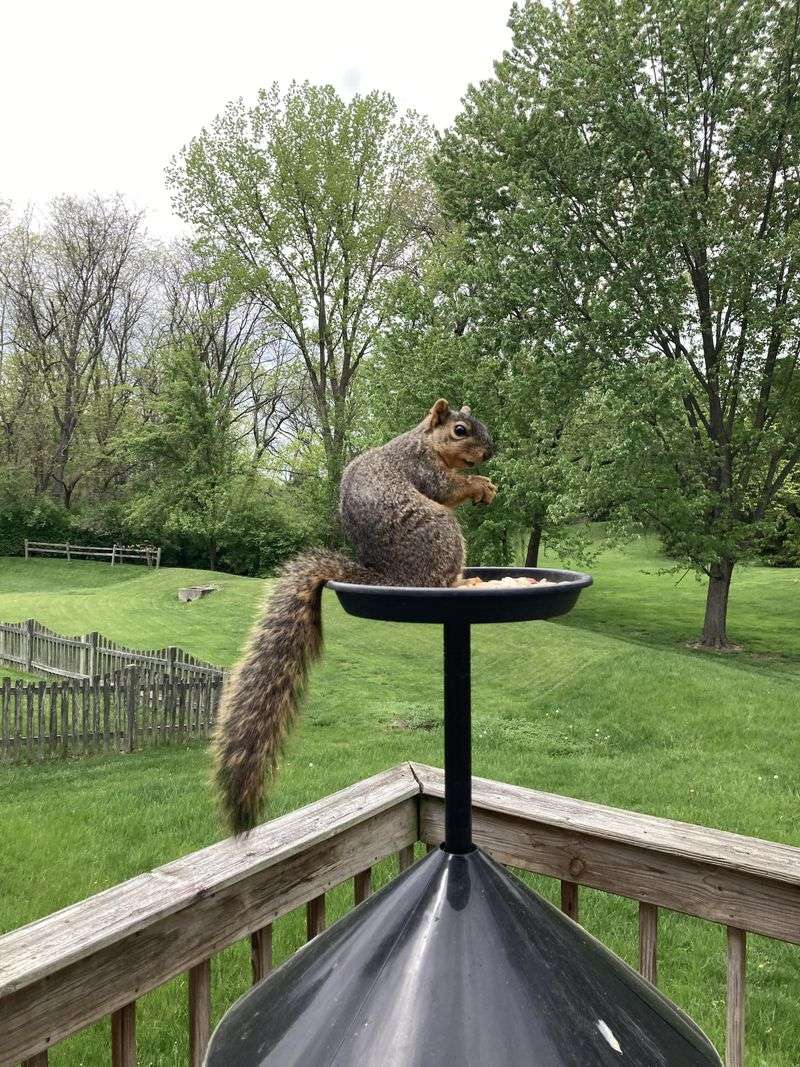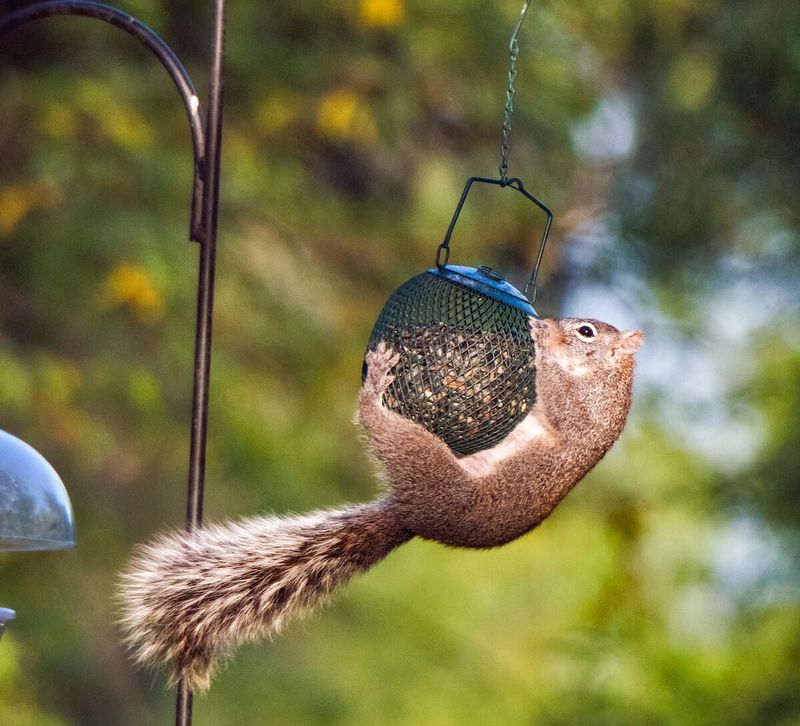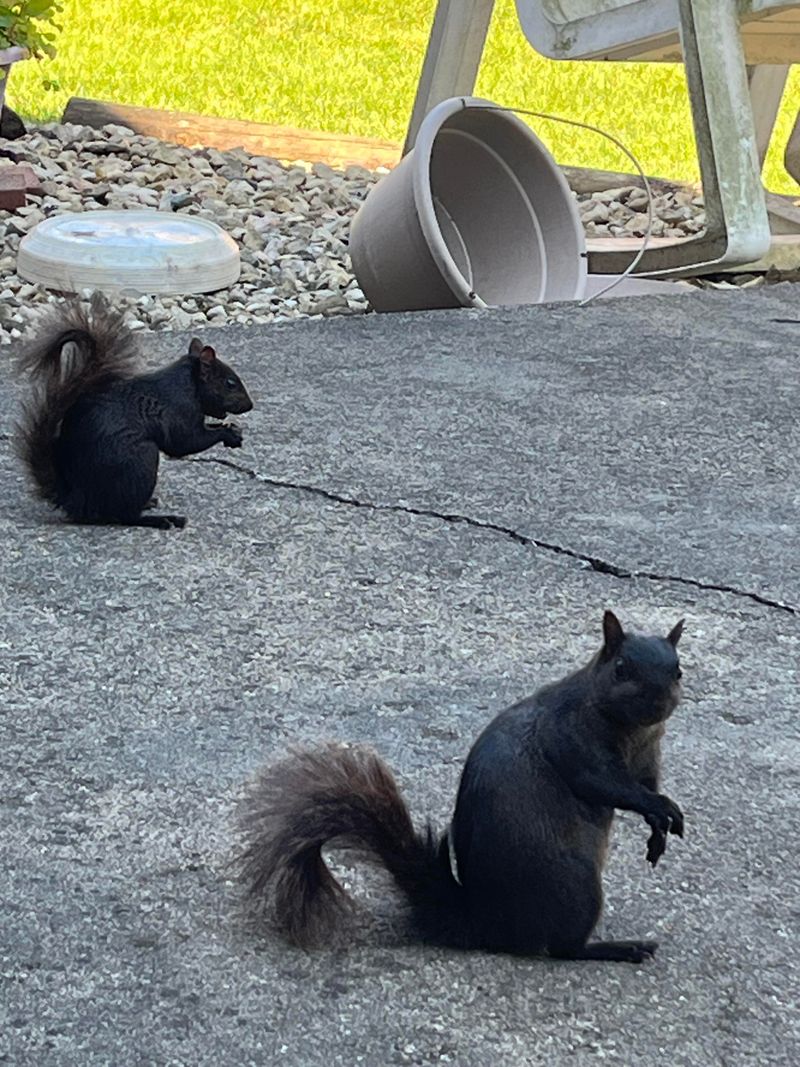Indiana’s changing seasons bring a parade of colorful birds to our backyards, from cheerful cardinals that brighten winter days to finches that flit about during spring. But anyone who’s set up a bird feeder knows the frustration of watching squirrels raid your carefully selected birdseed before the birds get their share.
For me, watching chickadees in the middle of an Indiana winter is worth the extra effort of squirrel-proofing my feeders. I once thought hanging a feeder higher would stop squirrels, but they proved me wrong within a day.
Building a truly squirrel-proof feeder doesn’t require expensive equipment or carpentry skills – just some thoughtful design and understanding of our local wildlife habits. With these seven practical solutions, you’ll be able to enjoy Indiana’s birds without subsidizing the squirrel population.
1. Choose Baffle-Protected Pole Systems
A sturdy metal pole with a dome-shaped baffle stops squirrels in their tracks. Position the baffle at least 4 feet from the ground to prevent jumping squirrels from bypassing it. Indiana’s gray squirrels can jump about 5 feet horizontally, so keep this in mind when placing your setup.
Metal baffles work better than plastic ones in our state’s temperature swings. During harsh Indiana winters, check occasionally for ice buildup that might create a bridge over your baffle.
I installed mine last October, and while squirrels tried persistently for days, they eventually gave up and moved to my neighbor’s unprotected feeder!
2. Build A Weight-Activated Feeder
Weight-activated feeders are ingenious devices that close access to seed when something heavier than a bird lands on them. The feeding ports snap shut when triggered by a squirrel’s weight but stay open for lighter birds common to Indiana like chickadees and finches.
You can build one using springs from the hardware store and some basic woodworking skills. The key is calibrating the spring tension correctly – too tight and even cardinals can’t feed, too loose and clever squirrels gain access.
My homemade version uses a counterweight system that has survived three Indiana winters without failing once.
3. Incorporate Caged Feeders
Surrounding your feeder with wire mesh creates a physical barrier that allows small birds to enter while keeping bulkier squirrels out. The ideal mesh size for Indiana birds is about 1.5 inches – perfect for chickadees, finches, and titmice but too small for squirrels and larger birds like grackles.
Hardware cloth from any Indiana home improvement store works wonderfully. Cut and shape it into a cylinder around your existing feeder, leaving a few inches of clearance for birds to maneuver comfortably.
During our humid summers, choose galvanized wire that won’t rust when exposed to Indiana’s frequent rain showers.
4. Strategic Placement Away From Launch Points
Squirrels are remarkable jumpers and climbers, especially the athletic fox squirrels common in Indiana. Install your feeder at least 10 feet away from trees, fences, or buildings to prevent aerial assaults. A clearing in your yard makes an ideal location.
Mount the feeder on a smooth metal pole at least 5-6 feet tall. Indiana’s winter snow accumulation can effectively shorten your pole height, so account for this when installing.
The middle of my lawn became the perfect spot after I watched squirrels repeatedly launch themselves from my maple tree like tiny, furry missiles!
5. Create Squirrel Distraction Stations
Sometimes the best defense is a good offense! Set up a dedicated squirrel feeding area away from your bird feeders with corn, peanuts, or sunflower seeds. Indiana squirrels will often take the easy meal rather than work for the more challenging bird feeder.
Old stumps or logs make perfect platforms. During Indiana’s coldest months, I scatter corn beneath a sheltered area near my property edge, drawing squirrels away from my feeding station.
My neighbor laughed when I started this approach, but stopped when she saw how effectively it redirected the squirrels from my carefully protected bird sanctuary.
6. Use Spicy Seed Mixtures
Birds lack receptors for capsaicin (the compound that makes peppers hot), but mammals like squirrels find it intensely unpleasant. Mix cayenne pepper with your birdseed or purchase pre-treated hot seed blends specifically designed to deter squirrels.
During Indiana’s humid summers, refresh the spicy coating frequently as rain washes it away. I keep a dedicated shaker of cayenne next to my seed storage bin for quick application.
The first time a squirrel tried my spicy mix, its reaction was priceless – one taste and it practically did a backflip off the feeder! Meanwhile, the cardinals kept happily munching away.
7. Maintain And Adapt Through Indiana’s Seasons
Indiana’s distinct seasons require adjustments to your squirrel-proofing strategy. During fall, when squirrels actively gather food for winter, increase baffle heights to counter their more determined efforts. In winter, clear snow that might create stepping stones to your feeder.
Spring brings new challenges as hungry post-hibernation squirrels return. Consider temporarily increasing the spiciness of your seed mix or moving feeders to new locations to confuse returning raiders.
My system works year-round but needs seasonal tweaking. What deters squirrels in January often needs reinforcement by March when they’re particularly determined!

